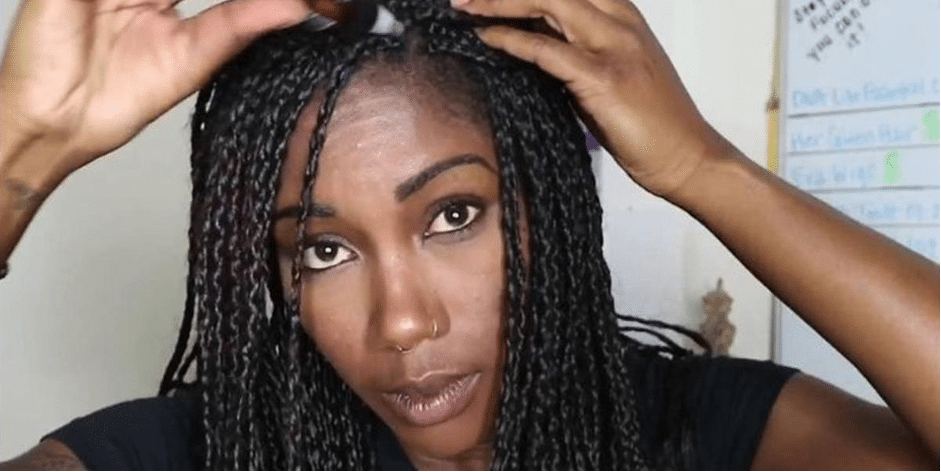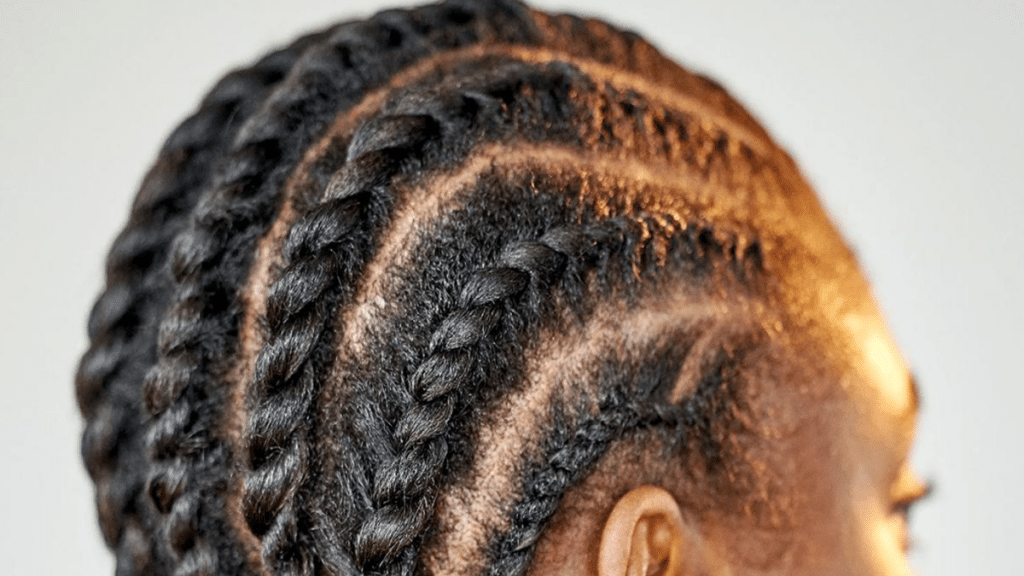If you’ve just gotten braids but find them uncomfortably tight, you may be wondering how to loosen tight braids overnight. The good news is there are several tricks you can try to help relieve tension on the scalp caused by heavy or too-tight braids.
One of the best things about protective braided styles is they allow you to take a break from daily styling and manipulation of natural hair. However, braids that are too tight can cause unnecessary tension on the hair follicles and scalp. This can lead to conditions like traction alopecia over time. Heavier extensions may also cause neck, shoulder and headache pain.
Thankfully, there are ways to loosen and lighten heavy braids safely without fully taking them down. Here are pro tips to give your scalp and strands some relief:
Do a Hot Oil Treatment
Heat helps to soften and relax synthetic hair, allowing braids to loosen their grip. Apply warmed coconut, olive or almond oil along the braided rows, massaging gently as you go. Wrap hair in a warm towel and allow the oil to penetrate for 20-30 minutes before rinsing out. The warmth will enable the extensions to become more pliable and loose.
Spritz With Water-Based Mix
Create a hydrating spritz by mixing water, leave-in conditioner and a couple drops of lavender or tea tree oil in a spray bottle. Mist this liberally throughout braids, targeting tight areas first. The moisture will help to relax and expand braids. Massage scalp gently after spraying. Oils also provide relief to itchy or stressed skin.
Do Strand-by-Strand Stretching
Gently tug and pull on individual braids from root to tip, especially tight areas around the nape of neck and temples. This creates space between each braid, minimizing bulky appearance. Ensure not to pull too aggressively to avoid damaging your natural hair. The relief will be immediate.
Remove a Braided Row
Eliminating a row or two of braided extensions can work wonders to reduce overall weight and tension. Carefully snip the knotted base of the synthetic hair you want to remove using sharp scissors. Unravel braid gently, trying not to tug on your natural hair. Removing just a few strategic rows gives instant relief.
Cut Braid Length
If removing full braids isn’t an option, simply trim 2-4 inches off the ends instead. Use sharp shears to avoid split or frayed ends. Removing length reduces weight so there is less pull on the scalp. Plus, blunter ends help braids lay flatter to the head.
Do Scalp Massages
Gently massaging the scalp increases blood flow to hair follicles, boosting growth and relief. Use circular motions all along braided cornrows. Apply oil or serum beforehand to slick scalp and minimize friction. A scalp brush with soft bristles can also help to gently exfoliate and stimulate.
Sleep Without Tying Up
Avoid nightly updos like high buns which can exacerbate tension on the scalp from the constant upward pull. Allow braids to hang freely instead while sleeping. Use a satin pillowcase to minimize friction. The hours spent laying flat gives braids time to loosen and adjust overnight.
Visit Your Loctician
If you had your braids professionally installed, book a touch-up appointment with your stylist. They can remove bulk, trim length and reinforce strands as needed. Visiting around the 2 week mark ensures braids stay fresh. A maintenance session with your stylist helps preserve both style and scalp health.
Avoid Heavy Product Buildup
Resist product buildup by not over-applying oils and creams daily. Only focus on scalp health every 2-3 days. Too much residue along the braids causes them to attract lint and dirt. This quickly leads to matting and additional weight. Clarify weekly.
Use Lighter Hair Extensions
The next time you get braids, request lighter synthetic hair if possible. Brands like Sensationnel Feather Braid hair are ultra-lightweight, putting less strain on strands than traditional kanekalon braiding hair. There are options for every braiding style. Discuss options with your loctician.
How tight should braids be?

Ideally, braids should feel secure but not painfully tight. There should be no sharp, stinging or constant headache pain. Tightness often relaxes slightly about 3 days after install as scalp adjusts. If braids still hurt after a week or you experience symptoms like hair loss or bald patches, the braids are too tight and require removal.
When should you take out tight braids?
Braids that are uncomfortably snug should be taken out immediately to avoid long term traction damage. Waiting weeks to remove actually strains the scalp further. Take out ASAP if you experience sharp pains, bleeding, pus bumps or bald areas which signal injury.
How long should braids last?
With proper aftercare,braids can last 4-8 weeks safely depending on your hair type and braiding method. Fine, fragile hair withstands less tension than coarse strands. Intricate styles with small braids may require a take-down around 4 weeks. Looser styles can sometimes last 2 months. Touch up appointments every 2 weeks help preserve neatness, length and scalp health.
Getting temporary braided hairstyles should always be an enjoyable, protective experience. By monitoring tightness levels and avoiding prolonged tension with too-heavy hair, you promote hair growth rather than hinder it. Remember to listen to your body, scalp and strands. At the first sign of discomfort, try the easy at-home remedies to loosen braids before considering removal. With gentleness and patience your braids can retain their beauty without sacrificing comfort.
